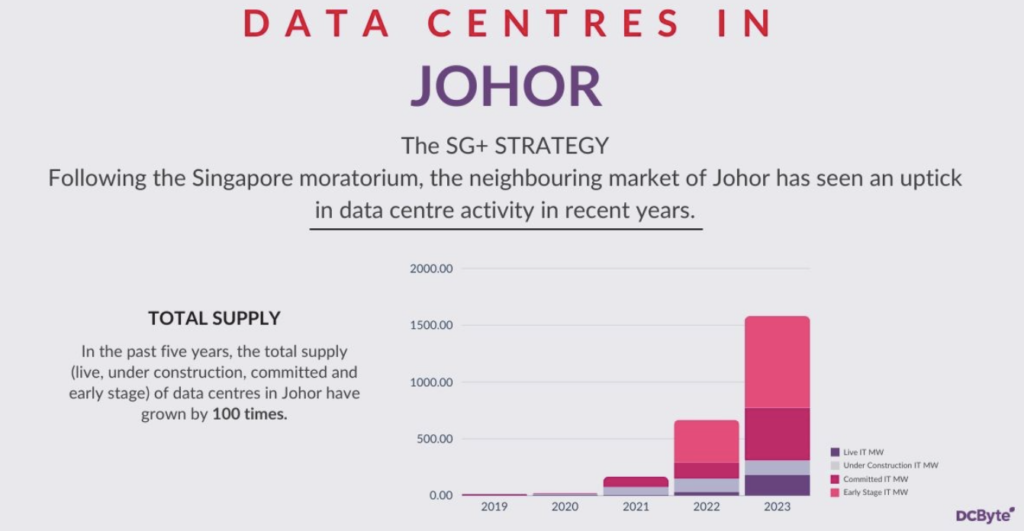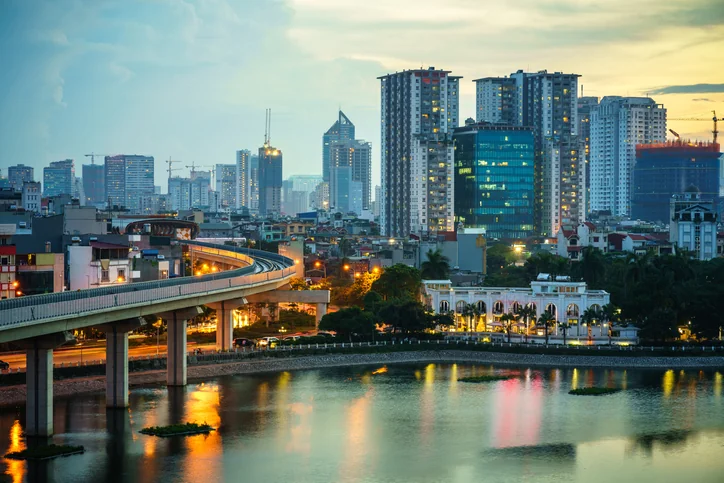 The data center sector in Southeast Asia has seen a boom in the last five years. Research by Technavio states the market will experience a total growth of $12.60 billion between 2020 and 2025. This impressive growth has been fuelled by several factors, such as the rapid advancement of artificial intelligence (AI) and 5G technologies, increasing digital transformation and the Internet of Things (IoT), thriving e-commerce, and pursuing digital sovereignty.
The data center sector in Southeast Asia has seen a boom in the last five years. Research by Technavio states the market will experience a total growth of $12.60 billion between 2020 and 2025. This impressive growth has been fuelled by several factors, such as the rapid advancement of artificial intelligence (AI) and 5G technologies, increasing digital transformation and the Internet of Things (IoT), thriving e-commerce, and pursuing digital sovereignty.
Amid these transformative changes, Malaysia is rapidly closing the gap with Singapore, long considered the regional epicenter for data center activity. Johor, strategically located in southern Malaysia, is emerging as a leading contender for becoming the next data center hub. According to DC Byte, Johor’s total capacity (live, under construction, committed, and early stage) now exceeds 1500MW, with significant growth in the past three years showing no signs of slowing.

Emerging Data Center Powerhouse
- Johor is fast emerging as a hyperscale data center hub. Singapore’s 2019 moratorium on new data center projects diverted investments to the neighboring state. With abundant land, a reliable power grid, and growing interest from providers and hyperscalers, Johor is well-positioned to relieve capacity constraints. The state’s strategic location and favorable conditions have made it a compelling destination for data center investments, especially after the moratorium was lifted.
Unmatched greenfield opportunities: According to Malaysian property agency Zerin Properties, the state of Johor in Malaysia is expected to attract RM17 billion ($4.9 billion) in new data center investments in 2024, building on the RM51.1 billion in data center investments in 2022. Linking the surge in investments in Johor to Singapore’s stricter criteria for data centers, favoring sustainability, Johor’s ample land and stable power supply, in contrast to Singapore’s rising energy costs and land constraints, make it an ideal location for building an advanced digital infrastructure hub.
- Affordable land costs: The availability of low-cost land adds to the region’s expansion potential. Johor provides competitively priced land parcels perfect for constructing sprawling hyperscale data center facilities. Combined with a supportive regulatory framework, this cost-effective land strengthens Johor’s appeal as a premier destination for data center ventures.
- Access to renewable energy: The Malaysian government has set targets under the Malaysia Renewable Energy Roadmap (MyRER) for renewable energy to account for 70% of the nation’s energy needs by 2050, aligning to achieve net-zero greenhouse gas emissions by 2050. The Johor Green Deal framework encompasses five priority areas: energy, transport and mobility, land use, nature and water, low-carbon cities, and industry. It seeks to amplify the state’s sustainable efforts. For data center providers aiming to reduce their environmental impact, access to a mix of energy sources, including natural gas, hydroelectric, and renewables, will facilitate more sustainable operations.
- Low industrial power tariffs: As AI reshapes industries, data centers requiring immense power for high-performance computing are no exception. Malaysia’s industrial power tariffs at $0.10 per kilowatt-hour (kWh) offer a competitive edge over Singapore’s significantly higher rates of $0.27 per kWh. This cost advantage could sway data center operators, especially those serving the burgeoning AI sector, to favor Malaysia for their facility locations.
- Affordable building costs: Across Asia Pacific, Malaysia offers a competitive construction cost of approximately USD per Watt, according to Cushman and Wakefield’s 2023 / 2024 Asia Pacific Data Centre Construction Guide. This advantage is attributed to lower expenses in land, construction, and energy.
- Connectivity for global reach: Malaysia boasts an extensive connectivity infrastructure facilitated by 25 international submarine cables. The nation’s advanced telecommunications network and widespread fiber-optic deployments enable efficient domestic and international connectivity.
Artificial Intelligence Reshaping Economies
As AI adoption rises across industries, it’s driving demand for expansive data center complexes needing vast land and renewable power access. As mentioned earlier, Malaysia’s Johor state offers advantages and aligns with the nation’s MyDigital Blueprint for leveraging AI to foster economic growth, talent development, infrastructure enablement, and innovation. This positions Johor as an attractive location for data centers supporting AI’s escalating computational needs while meeting sustainability goals.
With all this fervour in Johor for hyperscale and AI data centers, I would also like to raise our attention to what else such a hockey stick growth in data center capacity can do. These development projects will bind the utilities, power, and water between accommodating the requests and impacting other sectors. In Johor, they are the largest energy and water consumption growth due to the new capacity requirements by 2030. Building a robust digital economy will enable Malaysia to lead in this area. However, we must understand that with the emergence of massive power and water requirements, we still need to provide reliable and affordable clean energy and water to the end users while impacting the environment as little as possible.
As all these data centers are being planned, I will write more in the next article about where I see the sustainability goals of the new data centers. Overall, the data center sector must support Johor and Malaysia’s sustainability goals and environmental obligations.
1. World-class PUE with Zero Water use for Cooling
Water scarcity will be an issue around the world. We should be designing sub 1.2 PUE data centers using very little of this scarce resource. The data center sector should be mindful and particularly sensitive to Singapore and the region as one of the more water-stressed countries on the planet. Therefore, we should look to remove heat removal solutions that consume any water with almost no efficiency penalty over a traditional evaporative cooled approach.
2. Sustainable and zero pollution
Data centers have historically used diesel generators that rarely run. And with other energy technologies becoming increasingly cost-effective and reliable as backup power sources and the ability to transfer AI workloads flexibly, data centers can now provide flexibility to the grid.
3. Responsible actors on the grid
The new AI data centers should commit to participating in demand response and peak shaving programs to reduce grid load during high demand and prevent the need to build new generation capacity.
4. Lower carbon sources of energy
It is also important that our data centers switch to lower-carbon energy sources, including energy from renewable sources.
In my next article, I will explore how new AI data centers must provide operational and compute flexibility to work together with utility needs and a new paradigm in how they are viewed. Instead of being a burden on the grid, they will be explored as working together and interacting with and, in fact, helping the grid.
Learn more about the growth in Asia Pac in these articles by Chi Yee Ling:
Learn more about EdgeConneX Malaysia with data centers in the Central Business District, Cyberjaya, Bukit Jalil, and Johor: https://www.edgeconnex.com/locations/asia-pacific/kl-malaysia/
Also check out our Malaysia entrance: EdgeConneX Enters the Malaysia Market with Plans for Several Data Centers in Three Markets Offering Nearly 300 MWs of Capacity

